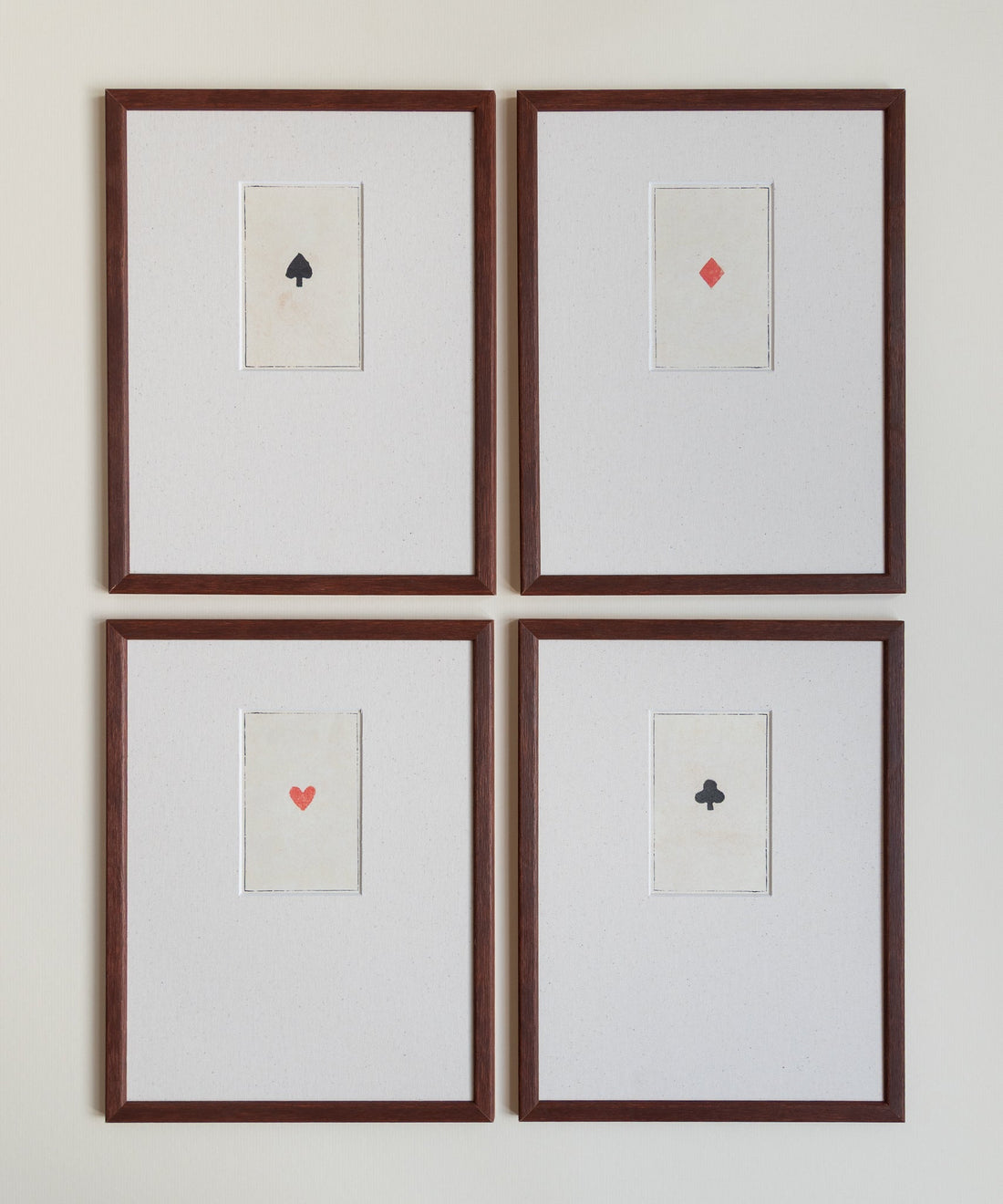
Why Are Ace Playing Cards Ornate Enough To Be Seen As Art?
The brilliance of antique prints, besides them being an innately beautiful gift in their own right, is that they are a celebration of everyday history, framing and showcasing the stunning art that surrounds us but which is sometimes taken for granted.
Postcards, nursery books, stamps and early cartography sketches are the kinds of magical artistry that have the potential to be seen as mundane… and one of the most interesting examples of this is found with historic playing cards.
We celebrate this with a set of prints showing historic examples of the four aces of the deck, the most valuable cards used in card games to this day.
A particularly interesting aspect of the aces, most notably the ace of spades, is that many of them have unusual, ornate and often symbolic designs, many of which have become collectors' items and even valuable historic artefacts.
More than one noteworthy deck is prominently displayed in The British Museum, but the reason why these ace cards look the way they do is rather more mundane than magical.
Stamp Collection
The ace of spades was not always ornate, and the beautiful artistic renditions had the initially rather less artisanal purpose of ensuring that tax had been paid on the cards.
For 350 years, stamp duty needed to be paid on playing cards, following earlier sporadic attempts by King James I (VI of Scotland) and Queen Anne to mandate that playing cards have a clear printing house insignia to ensure they are approved.
Initially, the duty was shown to be paid by physically stamping the top card in the deck, which almost always happened to be the ace of spades.
This was done because playing cards were typically sold in paper wrapping (which was also stamped), to ensure that there was proof that the duty had been paid, even when the wrapper had been thrown away.
This was important because not paying the duty led to a fine, and attempting to forge the stamp was punishable by execution.
However, a stamp could potentially be forged and added to any type of card, so to get around this, the tax office itself started to print its own cards.
The Old Frizzle
From 1765, the ace of spades had to be legally supplied by the tax office and featured a unique design that featured the coat of arms. These would be included with the rest of the deck and would be the top card to ensure compliance with the law.
However, as taxes on playing cards increased to the point that evasion had become the norm, the tax office tried to incentivise paying again in 1828, not only by making the duty cheaper but by providing a unique, highly intricate card known as “Old Frizzle” printed with the marker’s name.
This was finally abolished in 1862, with stamp duty reduced to three pence, and cardmakers were able to create whichever designs they wanted.
These ranged from relatively minimalist aces to particularly vibrant and detailed works of art, in a tradition that continues to this day, even 60 years after stamp duty on cards was abolished entirely.
